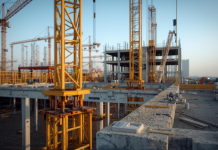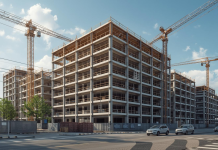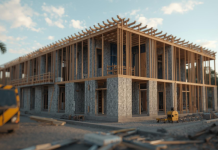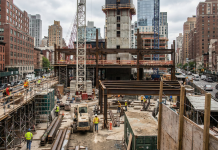Colorado faces a 100,000 home shortfall. Only California has it worse.
But Colorado contractors are seeing something most states aren’t: government backing for methods that drastically reduce construction timelines.
I tracked three strategies reshaping how homes get built. The implications reach far beyond Colorado’s borders.
The 16-Day House Revolution
Traditional home construction timelines are dead. Companies are now completing fire-resistant 3D-printed homes in just 16 days using concrete walls rated at the highest safety level.
These aren’t experimental prototypes. They’re real houses in wildfire zones where half the state lives.
The technology creates what builders call “legacy homes that can be passed down, rather than torn down” with better wildfire protection than wood frame houses.
Here’s what matters for contractors: The concrete mix eliminates lumber price volatility entirely. Smaller crews can operate the 3D printing equipment.
But there’s a catch. The technology requires new certifications. Colorado community colleges now offer 3D concrete printing programs, with first graduates expected mid-2024.
The Biggest Bet on Modular
Colorado just made the largest state investment in modular manufacturing history. The $38 million in low-cost loans to eight manufacturers shows they’re serious about factory-built homes.
Governor Jared Polis stated it plainly: “Solving our housing crisis is all hands on deck. Innovative solutions like Alquist 3D and communities like Greeley are crucial to our success.”
The investment is already creating jobs. Alquist 3D selected Greeley for their headquarters, bringing 79 new positions focused on advanced construction techniques.
The numbers tell the story. Modular construction significantly reduces on-site labor and project timelines. Weather delays become less critical when most construction happens indoors.
Traditional contractors aren’t being pushed out. They’re being repositioned. Site prep, foundation work, and final assembly still require local crews. The difference: predictable schedules and reduced weather risk.
Policy Speed Meets Construction Reality
The state is cutting red tape. Colorado aims to reduce project approval time from 240 days to 90 days by July 2024, with eventual goals of 10 days.
The reasoning is simple: “With housing, time is money.”
This creates a big opportunity near train stations. Denver’s transit agency operates 77 light-rail stations, and new zoning laws will require approximately 60,000 housing units around those stations alone.
The permit acceleration has immediate cash flow implications. Faster approvals mean contractors carry project costs for shorter periods before seeing revenue.
The transit-oriented development mandate creates substantial construction opportunities over the coming years. High-density projects favor contractors with experience in mixed-use development and tight urban sites.
What This Means for Construction Professionals
Colorado’s approach goes beyond local politics. They’re showing how to build fast and strong.
The combination of 3D printing technology, modular manufacturing investment, and streamlined approvals makes things possible that weren’t before.
For professionals watching these developments, the question becomes clear: Will other states copy this?
The state has become the test case. If it works here, expect copycats.
Three immediate actions for contractors outside Colorado:
First, start building relationships with modular manufacturers now. The supply chain advantages become critical when lumber prices spike again.
Second, invest in crews trained on new technologies. The labor shortage makes skilled operators increasingly valuable, especially those certified in 3D printing or modular assembly.
Third, track Colorado’s permit timeline results. If they hit their 10-day approval target, expect similar pressure in your market in the coming years.
The housing shortage affects every state. Colorado found three ways to build faster and cheaper while creating jobs.
Other states are watching. Smart contractors are preparing.








